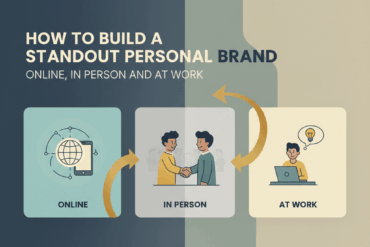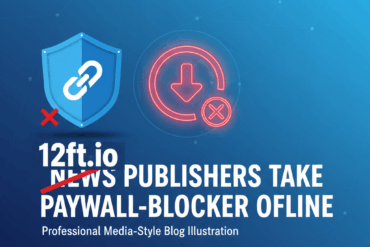By Nilay Patel
Authors Felix Gillette and John Koblin explain how your favourite shows kept HBO afloat.
BO started as an experiment. It was a way to get people to switch from getting TV over broadcast antennas to cable by offering events you’d otherwise need tickets to see: sports, plays, movies. That’s where the name Home Box Office comes from.
But it grew from there in surprising ways: HBO was a major innovator in satellite distribution, in working with cable operators around the country, and of course in programming. The company’s taste and style have influenced and shaped culture for a generation now. And importantly, HBO did it without any real data: the cable companies owned all the subscribers, so HBO made decisions through instinct and experience.
The amazing thing about HBO is that it has stayed true to itself through an absolutely tumultuous set of ownership changes and strategy shifts. If you’re a Decoder listener, you know about the chaos of AT&T and HBO Max and the sale to Discovery to create Warner Bros. Discovery, but it’s so much twistier than that.
I talked through all of those twists with Felix Gillette and John Koblin, authors of the terrific book It’s Not TV: The Spectacular Rise, Revolution, and Future of HBO. Felix and John also peeled back the curtain on your favourite HBO shows, from Sex and the City to Game of Thrones.
Before we get into the episode, I have to do our usual set of disclosures: I’m a Netflix executive producer. We made a Netflix show called The Future Of. You should watch it. I’m hopelessly biased in favor of the show we made. Also, Vox Media has a minority investment from Comcast. They don’t like me very much. And I worked at AOL Time Warner. I quit to start The Verge.
Okay, that’s that. Let’s get into the interview — it’s a good one.
Felix Gillette, you are an editor and writer at Bloomberg News.
FG: That’s correct.
And John Koblin, you are a reporter at The New York Times.
JK: Hi.
Collectively, you are authors of It’s Not TV: The Spectacular Rise, Revolution, and Future of HBO. Welcome to Decoder.
JK: Thanks for having us.
I am really excited about this episode. I loved the book. I am completely obsessed with whatever is happening with Time Warner, the company that gets passed around from company to company over time. It seems like if you buy Time Warner, you’re doomed. Something very bad has gone on. But HBO is this shining jewel that seems to persist regardless of that noise. I think that’s a really interesting thing to unpack, and the book does a really good job of that, so thanks for coming on. I also want to commend you. Bloomberg and the Times are pretty fierce rivals, yet you came together to write a book.
FG: Well, we’re long-time buddies. It did take a little smoothing over, but it worked out well in the end.
We’re doing a media episode of the show, but there’s also a media subplot here, which is that you guys had to smooth that over. It’s good.
Let’s start with the beginning of HBO. I think most people listening to Decoder think of HBO as a legacy brand, as this thing that gets passed around that has to make the shift to streaming in the context of Netflix and all this other stuff. It’s actually a much more interesting story. It basically started out as a value-add to a local cable system in New York. Take us through the genesis of HBO.
FG: In the early days, it was basically Charles Dolan, who went on to Cablevision fame and owning the New York Knicks and the New York Rangers. It was Dolan’s idea originally. He got backing from Time Life, which at that point was a magazine empire that was attempting to diversify. Dolan’s idea was basically like, “I’m trying to build out the first cable system in lower Manhattan.”
There were neighbourhoods in New York that just couldn’t get good broadcast television coverage because the buildings would block the signals. They were like, “Oh, we’re going to build cable in the city,” but it was a huge mess. It was struggling and losing a lot of money.
While on vacation in France, he thought, “What’s a way to entice people to actually pay for TV when most people are already getting it for free?” He thought that maybe people would pay if they started a channel where you could get Hollywood movies and some sports from Madison Square Garden. That was its humble origin, and it really did not work for many, many years. It almost died immediately, so it’s kind of incredible it survived.
What’s the turn that made it work in those early cable days?
JK: I mean, as Felix put it before, it was a novel concept to pay for a TV network. Even going back to the days of radio, you expected that to come into your home for free. HBO decided, “All right, let’s just look at that name: Home Box Office. Let us offer something where a viewer or a subscriber will get access to something they can’t get at home,” whether that’s a ticket to a movie that was in theatres just a few months earlier, a boxing match, a concert, or a standup special.
HBO started programming that content really aggressively in the late 1970s and into the mid-1980s. That included making their own original movies as well. That’s sort of the thing that really started to turn HBO into a viable business by that point.
FG: It also couldn’t have happened without this big technological leap forward, which I thought was really interesting and didn’t know about before we started working on this book. Originally, for the first couple years after they launched HBO, there was really no way to distribute it. Only with the advent of satellite-distributed channels did that happen, and HBO was the first cable channel that made the leap onto satellite. Without that, it never would have been able to reach subscribers across the country. That happened in the mid-1970s, when HBO was about to be put down to death because it just wasn’t going anywhere.
At that point, Time Life made one last investment and said, “You know what? Okay. We’re going to rent some space on this new RCA satellite that, in theory, could beam moving pictures to anybody around the country that puts up a little satellite dish.” They tested it with the “Thrilla in Manila” boxing match in the Philippines, and it ended up being this great success. They could, in fact, distribute it around the country.
“Once they made that leap onto satellite, everyone else followed.”
Once they made that leap onto the satellite, everyone else followed. That was really the advent of all of these other cable channels that we’re all so familiar with, like MTV, BET, and Comedy Central. They all followed HBO’s lead to go onto satellite.
I actually thought that was an utterly fascinating component of the book. A theme that comes up on Decoder over and over again is how your distribution affects what you make. The content is always inevitably and completely shaped by its distribution method. What’s really interesting about that to me is that in the internet age, we think about distribution as being pretty direct, right? There’s a creator, there’s a viewer, and there’s the YouTube algorithm that will shape what you make because that’s the distribution. At the end of the day, there’s a pretty direct relationship there.
That’s not what you’re describing with HBO on satellite; it’s not a DirecTV consumer satellite system. They’re wholesaling out to other cable networks, who are effectively their customers, who then retail it out to their cable subscribers. They had to invent this whole system and put up these huge satellite dishes. This is a business that didn’t exist, but HBO manages to create it. How did they get through that? That’s a business model innovation and a very serious technical innovation. It seems like they lost the ability to do that later on. I’m curious, where did that culture come from at HBO in the beginning?
FG: I think they made a really smart decision early on. They decided, “If we’re going to charge people, say, $10 a month to get this channel of Hollywood movies in their home, we’re going to split that 50 / 50 with the cable operator. For anyone that is incentivized to go out and invest $100,000 or whatever to buy a big satellite receiver and then wire it into people’s homes, here’s something else you can offer them besides what you’re just going to see on broadcast television. Here’s a channel of Hollywood movies.” It was something else they could sell customers to get them into the cable ecosystem when it was really a new concept to pay for TV, and they would get to keep half the money.
That really made HBO into something that these nascent cable operators wanted to sell to their customers. It also created this interesting dynamic that played out for the next several decades, where HBO was removed from the customer. They were a wholesaler, and they never had a direct relationship with the customers. That was good and bad in many ways and really shaped the network’s history all throughout and up to the day when the streaming era was born. We saw that play out in several other interesting ways.
“They didn’t really know much about their subscribers, so HBO’s executives basically just had to wing it.”
JK: The good of it is, they didn’t really know much about their subscribers, so HBO’s executives basically just had to wing it. They had to decide, “Okay, here’s what we think is good. We think they want this George Carlin special, we think they want to see Robin Williams, and we think they want this movie about the Exxon Valdez disaster.” By trusting on their own core instincts, it really helped influence HBO’s programming efforts throughout the 1980s.
I think this is a good time to bring up Netflix. I don’t want to start talking about HBO versus Netflix quite yet, but what you’re describing is a culture of creativity, of unbound artistic, subjective decision-making. Netflix is a totally data-driven organization. The HBO culture came up in a very different way. With Netflix, you get three episodes, they look at the streaming numbers, and then they cancel your second season before you even started. HBO is saying, “Here’s a group of executives. We trust them to make cultural decisions.”
FG: I think when we got into the book, even really from the beginning, we realized that this would be an amazing opportunity not just to contrast these two different companies as a New York-based company versus a California-based company and the cable and satellite era versus the streaming era, but also to do exactly what you mentioned. A company like Netflix, from its very origin, was so direct-to-consumer and really using the internet to figure out the data and patterns.
Even before streaming happened, when they were just mailing out the DVDs to you by mail, they were looking at all the choices that you made through their website. What did you want to watch? What time of year was it? All those patterns were guiding them. It was such an incredible contrast to HBO, which never had any data on customers, could never rely on anything, and had to come up with some other way of figuring out what it was that people would watch — and they did. Over the course of several decades, they created this very instinctive way of trusting artists and not really worrying at all about data and signals in the marketplace. I thought this part of the book was so much fun, contrasting those two different methods, those two different institutions, and the strengths and weaknesses of both models.
That piece of the puzzle, where their customers are the cable networks, creates a lot of opportunities. HBO gets really good at selling to those networks, and those networks get really good at selling to the customers. But it also creates this blind spot, where HBO doesn’t really know its viewers. It also creates another pretty major blind spot, which is that there were just a lot of boobs on HBO at the beginning, because they thought only men were going to buy cable.
It seems like that has maybe diminished now, but it’s just a part of HBO’s culture. I actually want to start at the beginning and trace it back to that lack of data, which created some enduring cultural opportunities for HBO and its creative culture, but it also created this pretty massive blind spot.
FG: Yeah, in the beginning, they were trying to figure out the format and the mix. “What is it we’re going to put on the air in addition to Hollywood movies?” One of the early executives was this guy named Michael Fuchs, who was the head of programming in the early days and became the CEO of HBO. He had this idea — and again, this wasn’t really based on data, it was just his own reading of the landscape — that the broadcast networks were very focused on female viewers. His idea was, “Well, they are ad-supported, and commercial sponsors want to reach women in their households. They want to sell them household goods. So if you look across the whole landscape, it’s slightly skewed towards female viewers.”
Because the broadcast networks were so powerful — this was during the era of ABC, CBS, NBC — they had to figure out, “Well, what can we do differently?” I mean, the whole idea of HBO was basically counter-programming against the networks. One idea was, “Okay, if they’re skewing the programming towards women, then we’re going to focus on men and do things that will attract male viewers.”
That idea was very explicit at the beginning. HBO’s original programming mix included things like late-night documentaries that had tons of sex in them — Real Sex was the franchise eventually — and boxing, which the broadcast networks were growing wary of because of the violence. And yeah, it involved a lot of female nudity.
In those early days, there was a code word inside of HBO for, essentially, more female nudity: ‘cable edge’
In those early days, there was a code word inside of HBO for, essentially, more female nudity. These writers and producers of shows would get a script back and say, “Yeah, it’s a great script and we really like it, but could it include a little more ‘cable edge’?” That was the code word. The idea was that they were pandering to male viewers, and they could include things that you couldn’t see on broadcast television, like nudity, bad language, violence. HBO’s early original programming was just littered with that stuff. It turns out that alone wasn’t really enough to create great programming.
The book is very much structured era by era of HBO, and every era of HBO has its set of signature shows. One era that I think breaks away from this legacy of very male HBO is the Sex and the City era, when that was HBO’s dominant product. How did they make the turn from, “All right, we need more ‘cable edge’ to attract male heads of household to buy this product,” to, “Actually, what we are known for is Carrie Bradshaw”?
JK: In the spirit of winging it, it was basically an accident. In the mid-1990s, Demi Moore was at the height of her celebrity, and she wanted to produce a movie about abortion. It was called If These Walls Could Talk, and it was going to be unflinchingly pro-choice and it was going to examine abortion through three different periods of American history: the 1950s, the 1970s, and the then-present day of the mid-1990s.
She had originally made the deal to do the TV movie with TNT, and TNT got skittish just as they were about to begin production. They were like, “Ugh, our advertisers might not like this pro-choice abortion movie.” Again, it was the mid-1990s. It was the height of the culture wars at that point and abortion was a red-hot topic.
Once HBO heard this, they swooped in and they said, “We’ll make it.” They did not think that their mostly male viewers were going to stampede to come and watch a movie about abortion. They wanted Demi Moore on their airwaves. And the cast also included Sissy Spacek and Cher, so this was just like a win-win. “Why not? Let’s do it.” Then it aired and the ratings came in the next day, and they were the highest ratings HBO had ever seen for an original production.
HBO executives were floored. They were like, “Wait, are there female viewers out there who are watching HBO and want to watch a show or movie about the female experience? What is out there right now?” What was out there was Darren Star, a former top producer on Beverly Hills, 90210 and Melrose Place. He was shopping a project with Candace Bushnell, who was adapting her book from a series of columns that she wrote for the New York Observer, called “Sex and the City.” Within 10 weeks of If These Walls Could Talk debuting, HBO made a deal to do Sex and the City.
This is another theme that comes up on Decoder all the time, which is that data can only tell you about the past. The data that HBO had would’ve never told them that these things would be successful in the future. How did that culture change around the sudden influx of data, both from Nielsen ratings and from the internet? Did anything happen inside of HBO to make it more expansive?
FG: Yeah, there was the issue of data and how it was going to be used. I think one way it changed HBO a lot was actually through a misunderstanding. In 2000, when the internet was taking off, AOL came in and acquired Time Warner. It was a famously disastrous merger of cultures, and at the time, it was the biggest merger in American business history. Part of what was driving that, weirdly, was AOL wanting more information on customers themselves.
In the book, we talk about how it took a long time for the merger to go through regulatory issues. When it was finally consummated and the AOL managers were showing up, we tell the funny story of the first time they arrived at HBO’s sales and marketing offices. They came in and they were very excited. “We love HBO. It’s an incredible brand. It has all these customers that love it. So the first thing we want to know is if you can just give us all your customer data?”
Everyone was looking around this conference room nervously like, “Customer data? What are these guys talking about? You just paid $100 billion. I hate to break it to you, but we don’t have that information. It’s the cable operators who have that.” That was one of the fundamental misunderstandings: that somehow there would be this synergy — that you could use HBO’s knowledge of what customers wanted with the internet, and that was going to turn into this incredible vortex of new synergy in this new world of the internet and entertainment.
I’m sorry, “vortex of synergy” is actually a great phrase. It’s perfectly accurate to what happens.
FG: The whole thing was just such a mess, and it obviously didn’t work out. That story has been told a lot of times, and we tell it through the HBO lens. It left this incredible hangover within Time Warner. I think that’s one thing that became apparent in our book, and it was really interesting to me. I had no idea beforehand.
It was just a disastrous experience for all of these television executives within Time Warner, at HBO, and for all these cable brands that had to deal with these AOL managers. They had this famous culture clash. Eventually, the stock price craters and everyone gets tossed out. They say, “Okay, the AOL guys didn’t know what they were doing. It was a total mess, so we’re going to go back to letting the TV people run this company.”
That was great, except it left them with this incredible distaste for the idea that people from the internet knew what the hell they were talking about. The problem with, “Oh, the internet is full of phonies and doesn’t matter,” was that it was really not a great lesson to be learning for a huge media company in the 2000s.
With each passing year, the internet was becoming more important and the technology was getting better in streaming. Time Warner, I think in many ways, got left behind because of that. We call it internet PTSD in the book. It was like that experience with AOL was so bad that they just rejected anything in the coming years that said, “Oh, maybe you should be investing in streaming technology, data acquisition, and in understanding what new modes of distribution are coming down the pipeline, because at some point it is going to happen.” That was a really fascinating dynamic to watch play out.
This brings us to Netflix and that PTSD hangover about the internet where the distribution was changing. Netflix was the classic disruptor there, right? They were mailing DVDs to people, and then they were starting their streaming service, which wasn’t very good. It really had no original shows and no movies, but everybody looked at it and said, “Okay, that is going to happen. This is going to get better.” HBO looked at it and said, “No, we’re good,” for quite some time. But Netflix was cheaper and more convenient. This is just a very classic disruption tale. What happened there?
Click HERE to read the remainder of the article.
Feature Image Credit: Photo by Carter Mathisen; Photo illustration by Will Joel / The Verge


:format(webp)/cdn.vox-cdn.com/uploads/chorus_asset/file/21990397/Decoder_Banner_Nilay02_1200x1200.jpg)



